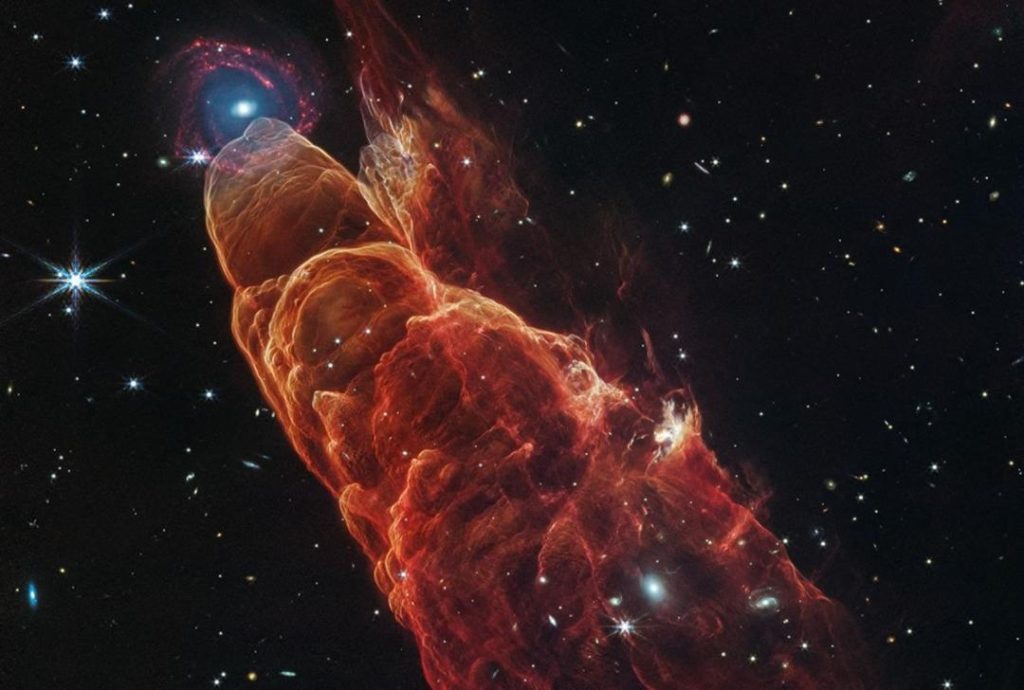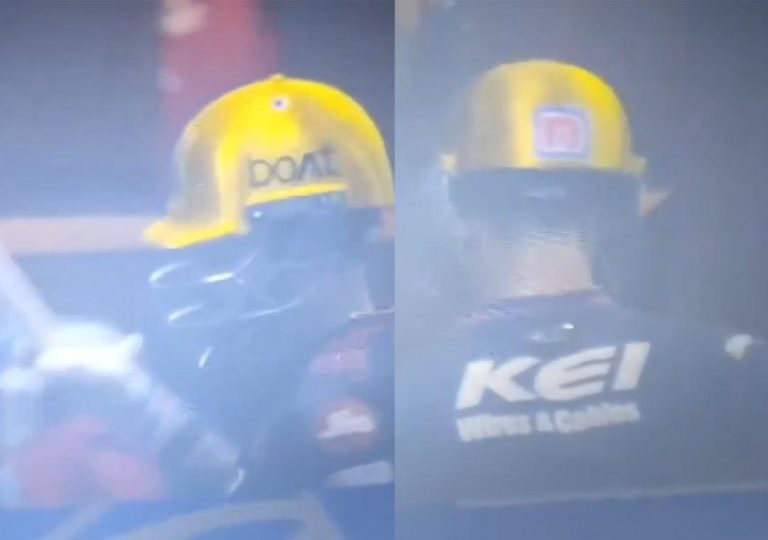
NASA Shares Pic of Cosmic Tornado Swirling in Space
In a breathtaking display of celestial wonder, NASA has shared an image that has left astronomers and space enthusiasts alike in awe. The image in question is that of Herbig-Haro 49/50, an outflow from a nearby still-forming star that has been nicknamed the “cosmic tornado” due to its swirling shape. The stunning picture, which shows the alignment of this outflow with a multi-hued spiral galaxy, provides valuable insights into the formation of young stars and the impact their jet activity has on the environment around them.
A Star in Formation
Herbig-Haro 49/50 was first observed in 2006, and since then, scientists have been fascinated by its unique properties. The outflow is a result of the interaction between a young star and its surrounding environment. As the star forms, it begins to emit powerful jets of gas and dust, which can travel millions of miles into space. These jets can be thousands of times faster than the speed of sound on Earth, and they can have a profound impact on the surrounding space.
The Cosmic Tornado
The nickname “cosmic tornado” was given to Herbig-Haro 49/50 due to its swirling shape, which is reminiscent of a tornado on Earth. The reddish-orange color of the outflow provides valuable information about the composition of the gas and dust that make up the outflow. By studying the color and composition of the outflow, scientists can learn more about the formation of young stars and the conditions that exist in the environment around them.
The Role of Jet Activity
The jet activity of young stars plays a crucial role in shaping the environment around them. The powerful jets of gas and dust emitted by these stars can interact with the surrounding space, creating complex structures and patterns. In the case of Herbig-Haro 49/50, the outflow is aligned with a nearby spiral galaxy, which is thought to be the result of the interaction between the star’s jet activity and the galaxy’s magnetic field.
Observations and Analysis
The image shared by NASA was captured using the James Webb Space Telescope, a powerful observatory that is capable of observing the universe in unprecedented detail. The telescope’s advanced instruments, including its Near-Infrared Camera (NIRCam), were able to capture the stunning image of Herbig-Haro 49/50, providing scientists with a wealth of new information about this fascinating celestial object.
What Does It Mean?
The discovery of Herbig-Haro 49/50 has significant implications for our understanding of the formation of young stars and the evolution of galaxies. By studying the properties of this outflow, scientists can gain valuable insights into the conditions that exist in the environment around young stars and the role that jet activity plays in shaping the universe.
Conclusion
In conclusion, the image of Herbig-Haro 49/50 shared by NASA is a breathtaking display of celestial wonder that provides valuable insights into the formation of young stars and the evolution of galaxies. The cosmic tornado’s swirling shape and reddish-orange color provide a unique window into the conditions that exist in the environment around young stars, and its alignment with a nearby spiral galaxy is a testament to the complex and dynamic nature of the universe.
Sources:






